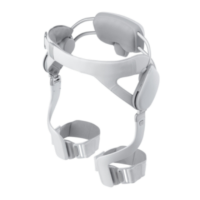What to do if my Samsung GEMS-H show '[Error] DETECTED ABNORMAL ACTUATOR'?
- CColleen StoneAug 16, 2025
If your Samsung Video Gaming Accessories device displays the message '[Error] DETECTED ABNORMAL ACTUATOR', try rebooting both the device and the tablet PC. If the tablet PC then displays 'NORMAL OPERATION', the problem is fixed. If rebooting doesn't clear the error, contact the manufacturer.

